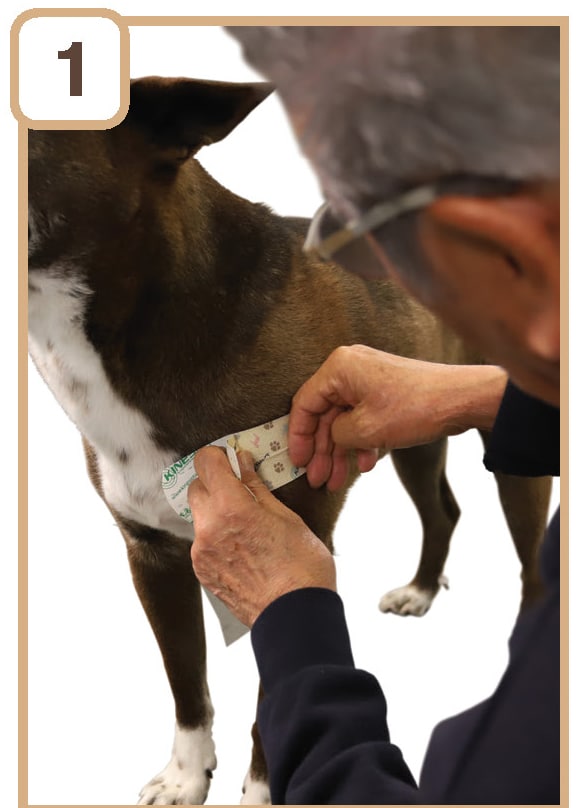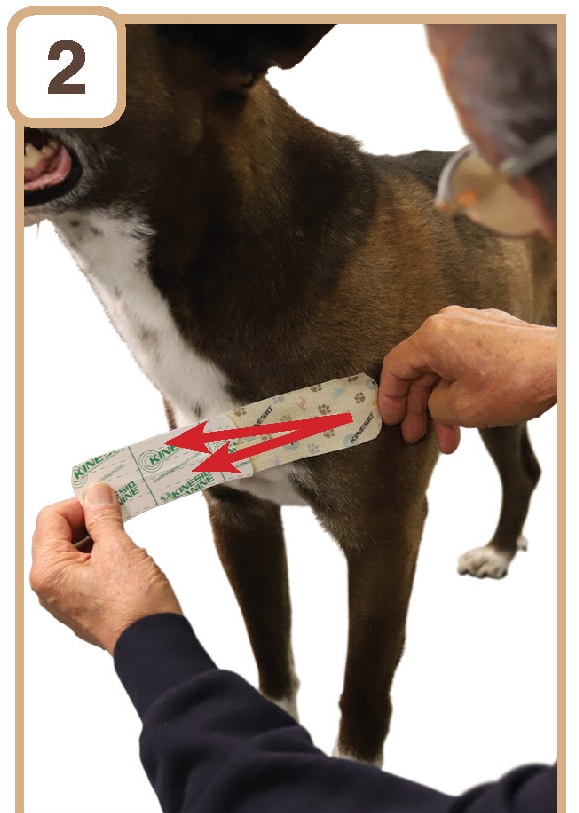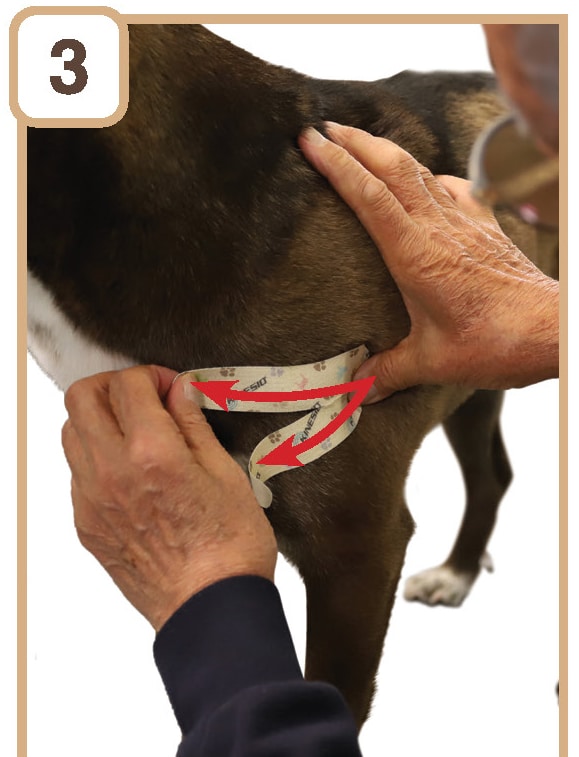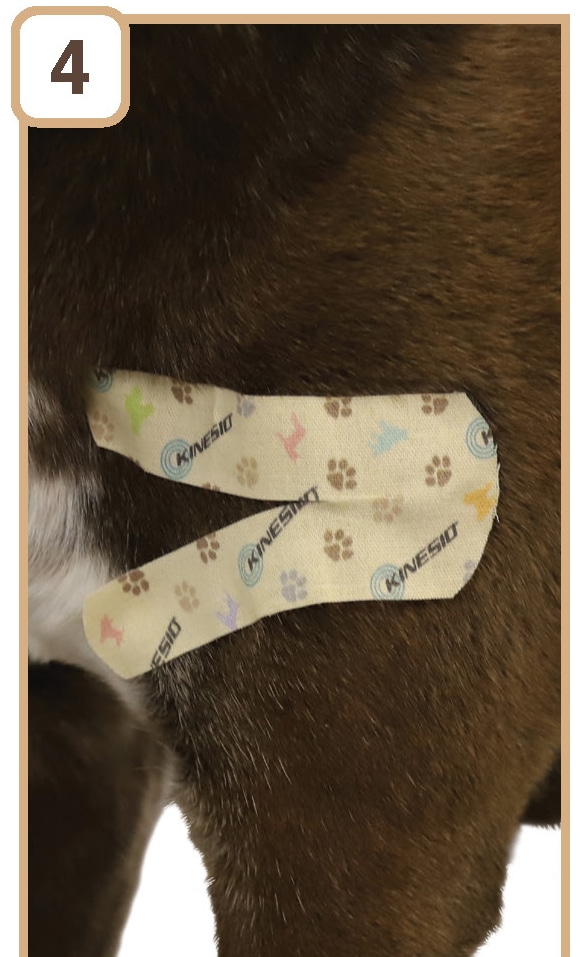Canine Pectoralis
The damage to this muscle or its attaching tendon is usually as a result of strenuous activity. This can happen during canine sports at the starting of a race or during the course of normal daily activities.
| Body Area: Pectoralis. The pectoral muscle of the canine is one of the muscles in the chest. | 
|
| Observation: Panting is normal but heavy panting can be a sign of stress or a sign that your dog may be in pain. If the dog is have difficulty getting comfortable or is trying to reposition themselves that may be a sign of pain. Increased body tension or flinching may also be in response to pain. | |
| Pet Position: Place dog in a standing position where the dog is comfortable and can relax. | |
| Owner Position: The owner takes an easy-to-apply position according to the posture in which the dog can relax. Sometimes an assistant may be needed to keep your dog still while applying canine tape. | |
| Targeted Tissue: From the outside of the shoulder joint towards the sternum | |
| Application Check List: Measure the size of the tape strip from the outside of the shoulder joint towards the sternum. | |
| Note: – There should be no tension on ends of tape. – Rub to activate the adhesive – Apply tape to affected area side only. 
|
|
| 1. Anchor the tape on the outside of the shoulder joint. Rub to activate the adhesive | 
|
| 2. Place a Y-strip toward the sternum from the outside of the shoulder joint with a tension of 20%. | 
|
| 3. Put the tail of the Y-strip along the pectoral muscle also with a tension of 20%. Rub to activate the adhesive | 
|
| 4. Completed Application | 
|
| Get More Taping Applications Like This In Kinesio Taping® Canine for Dog Lovers | 
|


